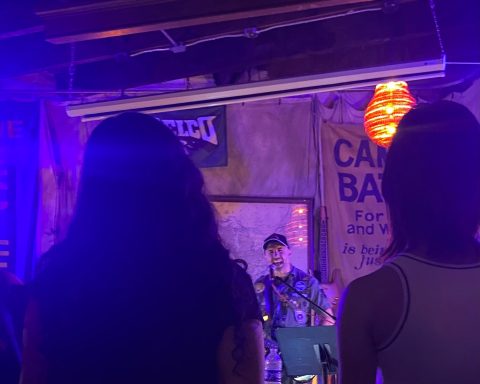Editor’s note: This article was initially published in The Daily Gazette, Swarthmore’s online, daily newspaper founded in Fall 1996. As of Fall 2018, the DG has merged with The Phoenix. See the about page to read more about the DG.
On January 27, 2017, I attended a lecture by Rev. Dr. Jamie Washington called, “One More River to Cross: The Intersection of Racism and Heterosexism.” The title alludes to the fact that queer people of color have many obstacles to face in society and dealing with the intersection of racism and heterosexism is one such difficulty.
Heterosexism is a word that I never came across before the lecture. I have heard and learned about homophobia and heteronormativity, but never heterosexism. Because the word was paired next to racism, I figured that heterosexism referred to the system of oppression against queer people. In other words, heterosexism is the discrimination against homosexuals and the reinforcement that heterosexuality is the norm of society.
Before beginning his lecture, Dr. Washington immediately engaged the audience by shifting the room dynamics. It seemed that everybody was sitting with a person that they knew. Dr. Washington wanted every person in the audience to step outside of their comfort zone, so he asked everyone to stand up from where they were sitting and find a person that they did not know before. He justified his move by acknowledging the fact that he was going to address two sensitive topics and he did not want anyone to feel uncomfortable with sharing their own opinions about the topics. I thought this was a refreshing move on Dr. Washington’s part because visiting speakers are not usually so interactive.
I thought Dr. Washington offered a good start to the lecture and would continue by offering an interesting talk, but I was wrong. Dr. Washington merely went over the similarities and differences of racism and heterosexism, which could be summarized as: they affect different parts of your identity and they contribute to different experiences of oppression. For an example of a difference, Dr. Washington noted how a person does not have to come out to his or her parents about race, but does have to come out for sexual orientation. Listing these similarities and differences would have been helpful for someone not familiar with race, gender, and sexuality studies, but the title of the lecture conveys the sense that this lecture was geared towards a specific audience, one who is already studying gender and sexuality theories. Using the words, “intersection” and “heterosexism,” is not going to attract people outside those who are studying race, gender, and sexuality in their classes. This jargon is not accessible to everyone since they may not know what the words mean like how I did not know the meaning of “heterosexism” before going to the lecture. So, because the title assumes that people are familiar with the topics, I wanted to hear more than just a compare and contrast between the two words.
I did however enjoy Dr. Washington’s acknowledgement that many people expect queer people of color to choose to be one of the identities. The person has to decide whether to be either a person of color or a queer person. Often times, gender and sexuality are left out of race discourse and furthermore, the queer community can be overtly racist. A salient example of this racism can be seen on dating apps when a person will list the races they will not swipe right on. This example shows how race and gender and sexuality are usually thought about separately. Because we see discrimination between minority groups, Dr. Washington advocated for a more intersectional approach to build solidarity between different communities. He also made it known to the audience that they do not have to split their identity if someone asks them to. A person can be both queer and a person of color because that makes a whole. I think Dr. Washington was trying to get at the fact that identity labels can sometimes be restricting since labeling one’s self as queer or a person of color will create expectations for the self. People will expect a queer person to act a certain way and to have a certain experience. The same goes for a person of color. In addition, people do not expect those two identities to mix since queer people of color are generally invisible in media and discourse. However, there is a multiplicity of experiences and one queer person of color will not be the same as the next. That is why Dr. Washington told everyone to just be themselves.
Even though I felt that the lecture could have offered more, I was glad to be in attendance because Dr. Washington was a thoughtful speaker and he recognized many issues that queer people of color deal with. Dr. Washington did only have an hour to address the immense topic of intersection, so I probably should not have expected too much. There was a retreat attached to the lecture, which I had no time to attend, so I am sure that people learned more during that time. I hope that more people in the future will take time to learn about such an important topic that affects many in the population.
Image courtesy of www.wikimedi.com.












